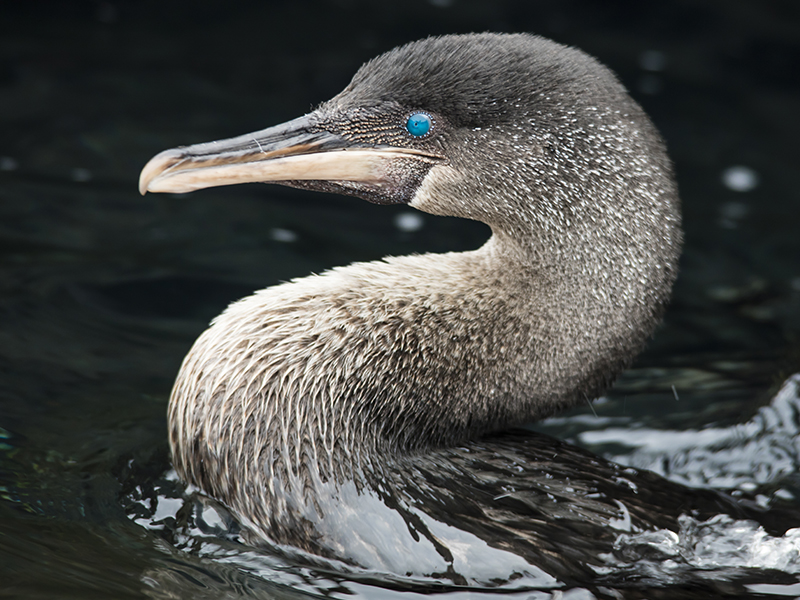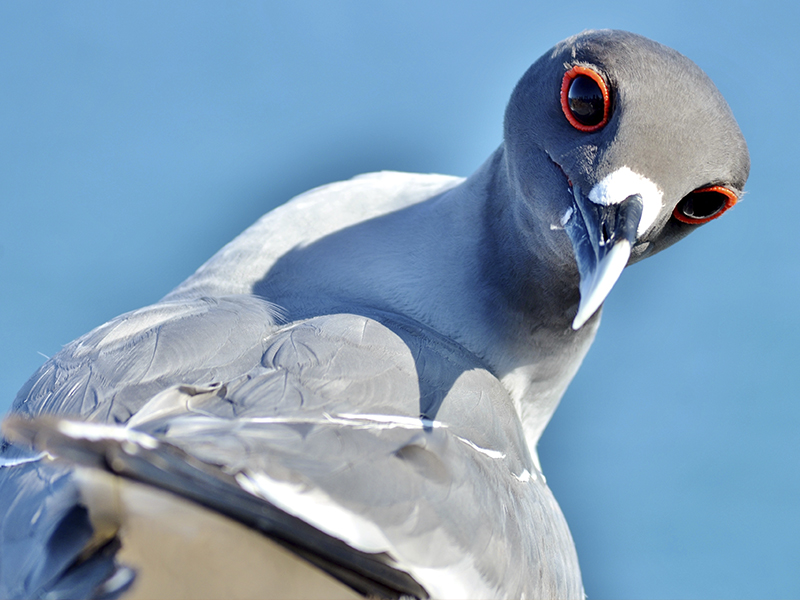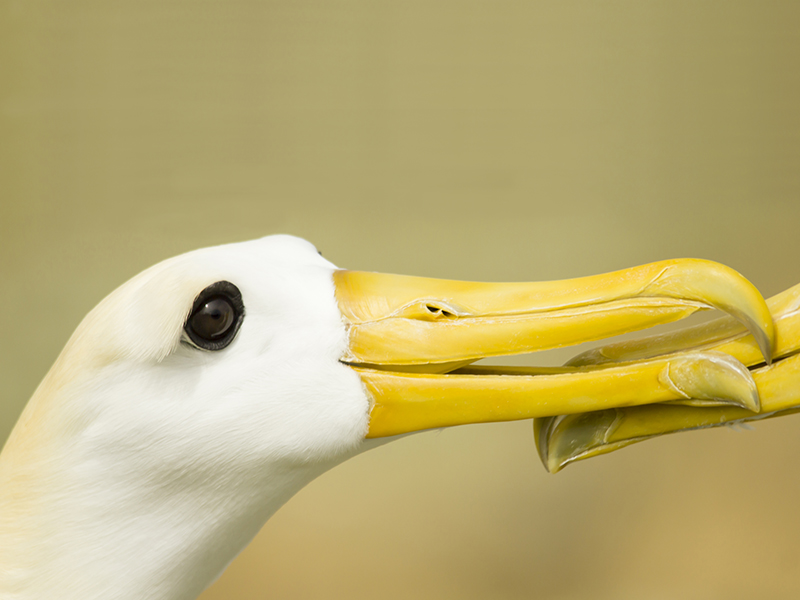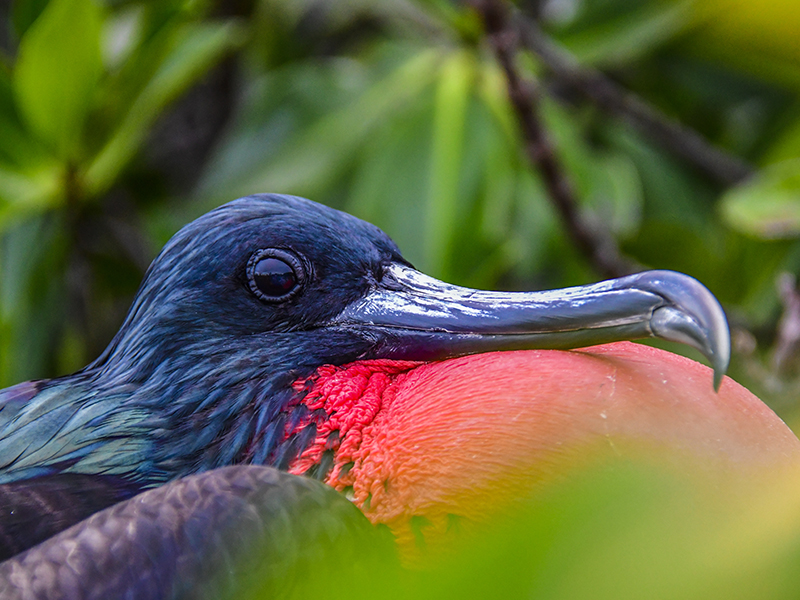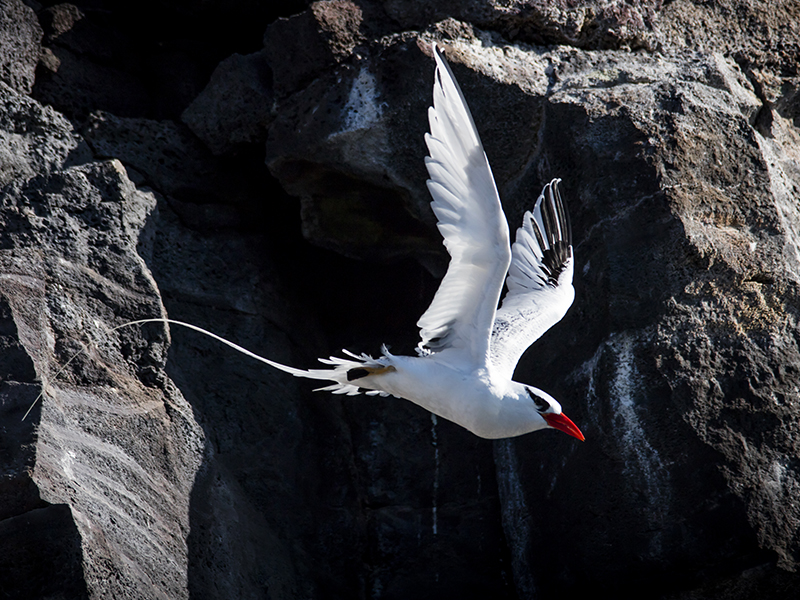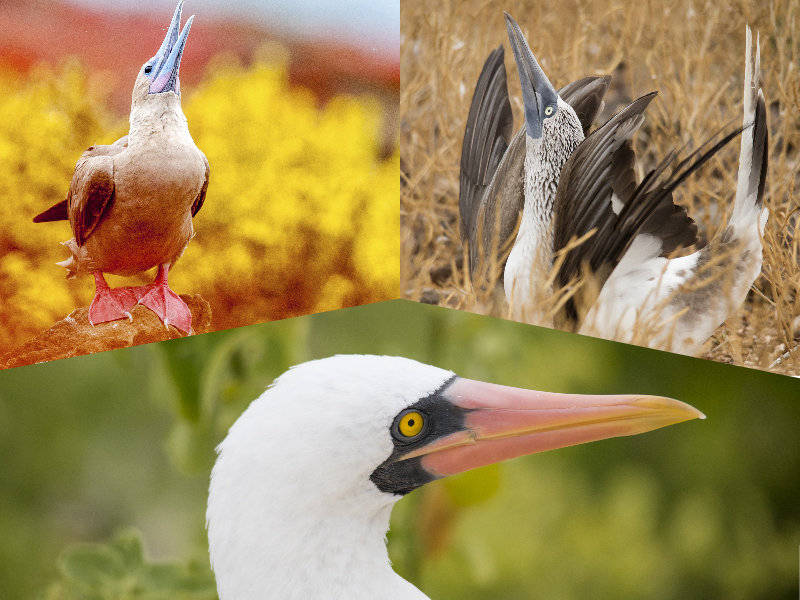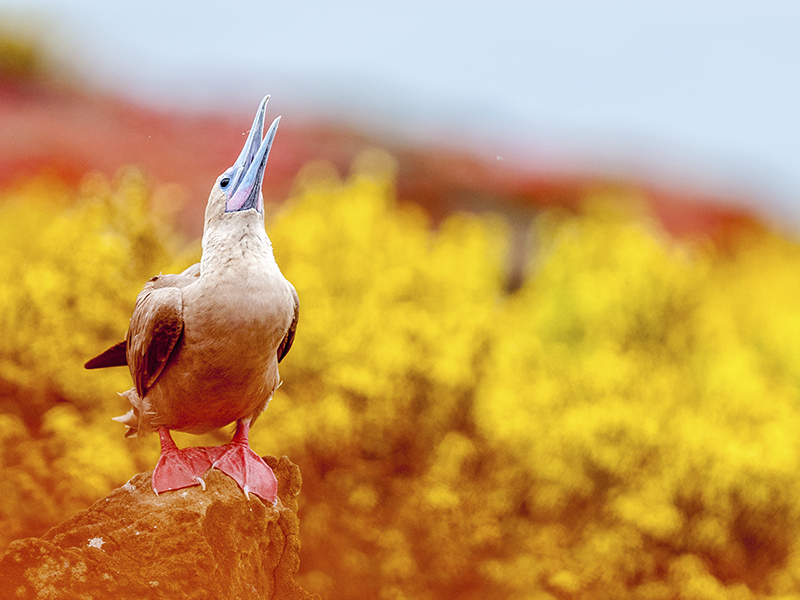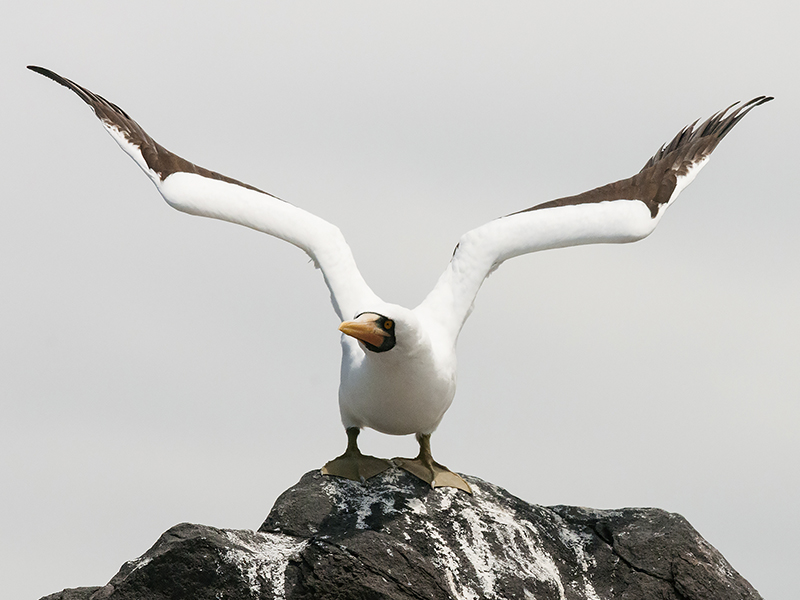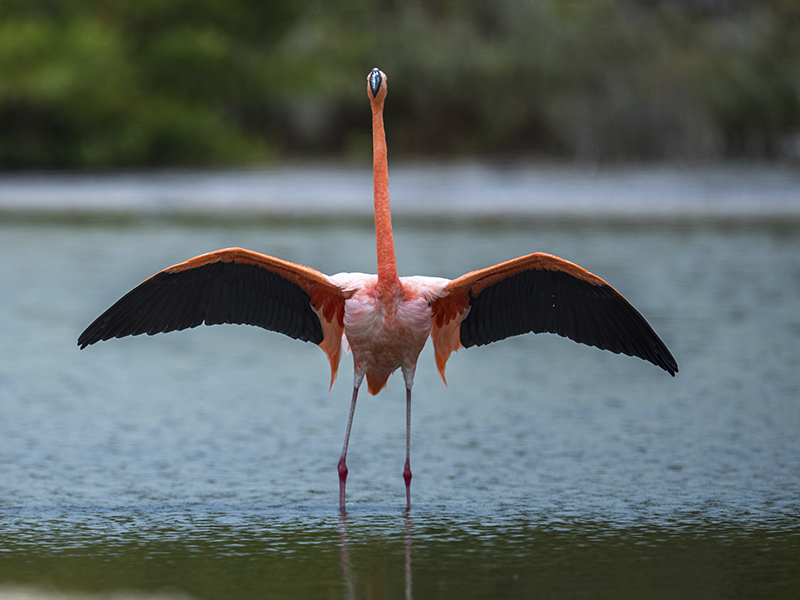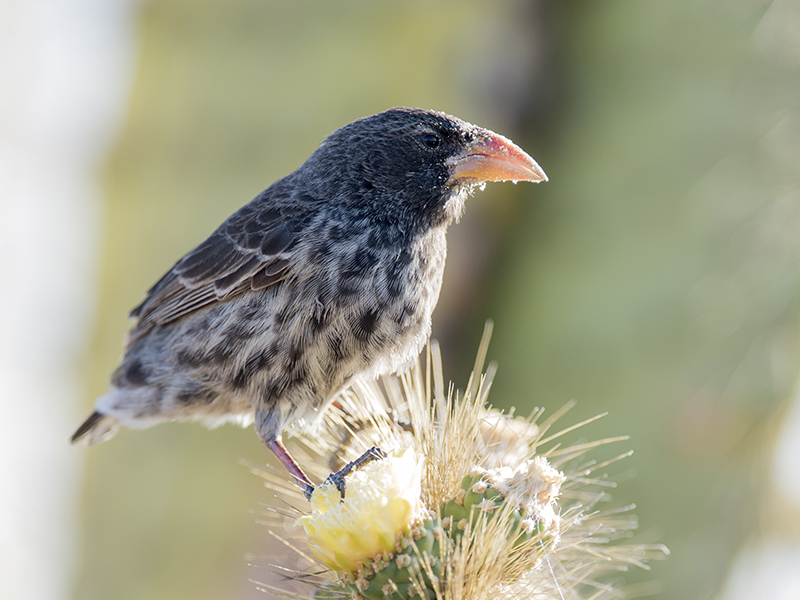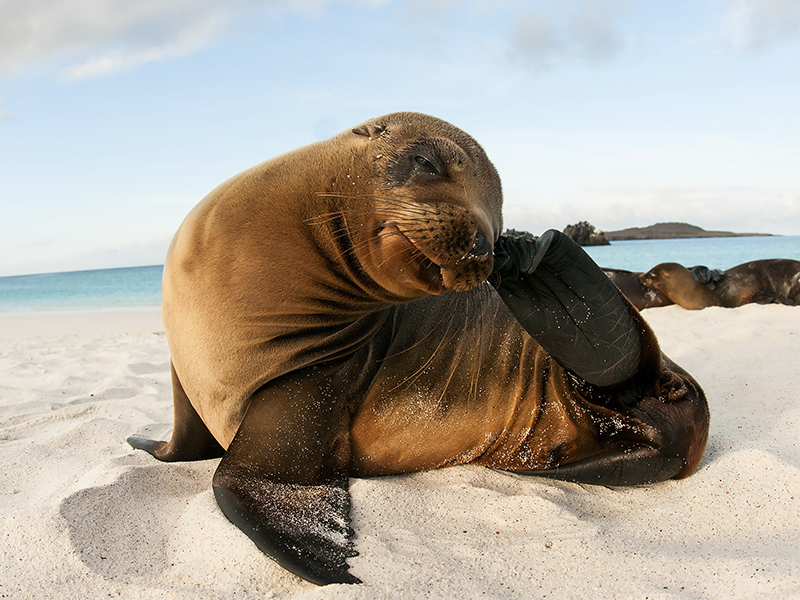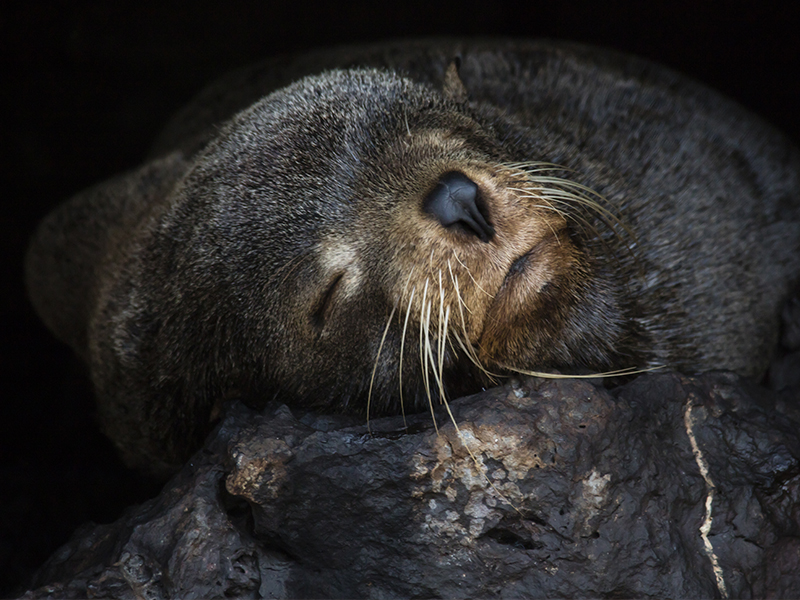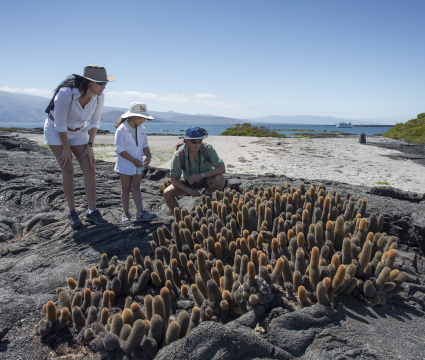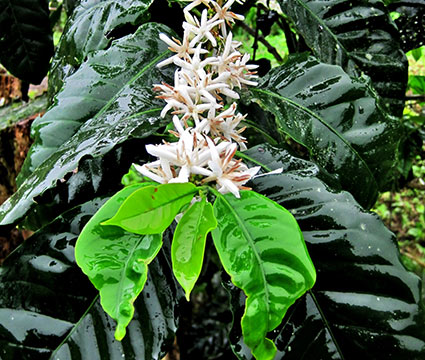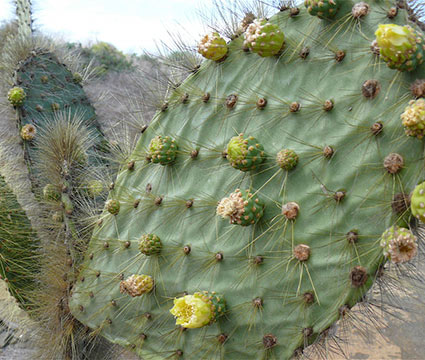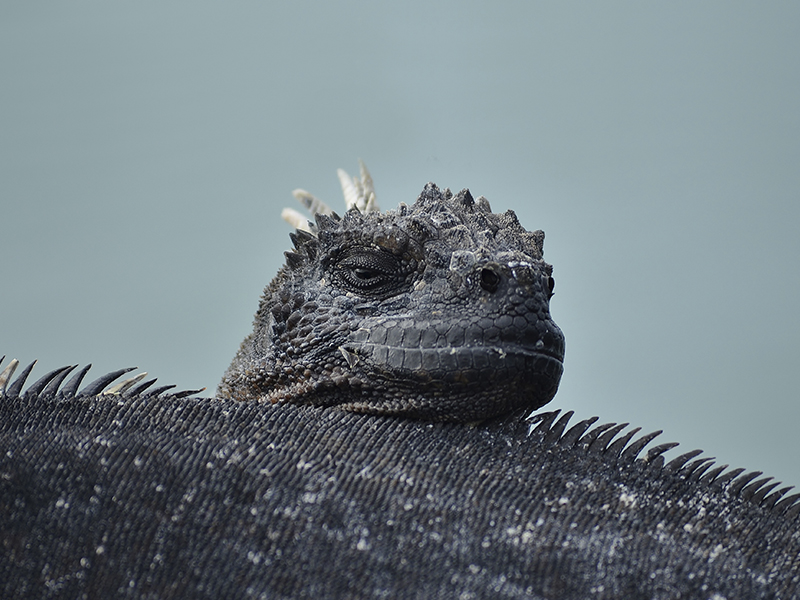
Marine iguanas are said to be nine million years old, older than the islands themselves. They are a native genus with one species divided into seven subspecies. Descendants of the land iguanas inhabiting the Ecuadorean mainland, they probably floated out on naturally forming driftwood rafts to the Galapagos Isles. These iguanas, unique to the Galapagos, are herbivorous and feed mainly on algae.
Marine iguanas vary in size from head to tail; 60 centimeters for the smallest iguanas found on Genovesa Island to the larger ones (up to a meter in length) on Isabela Island. Their charcoal skin serves two important functions: one as camouflage from predatory animals and the other to better absorb heat from the sun to warm their reptilian blood.





